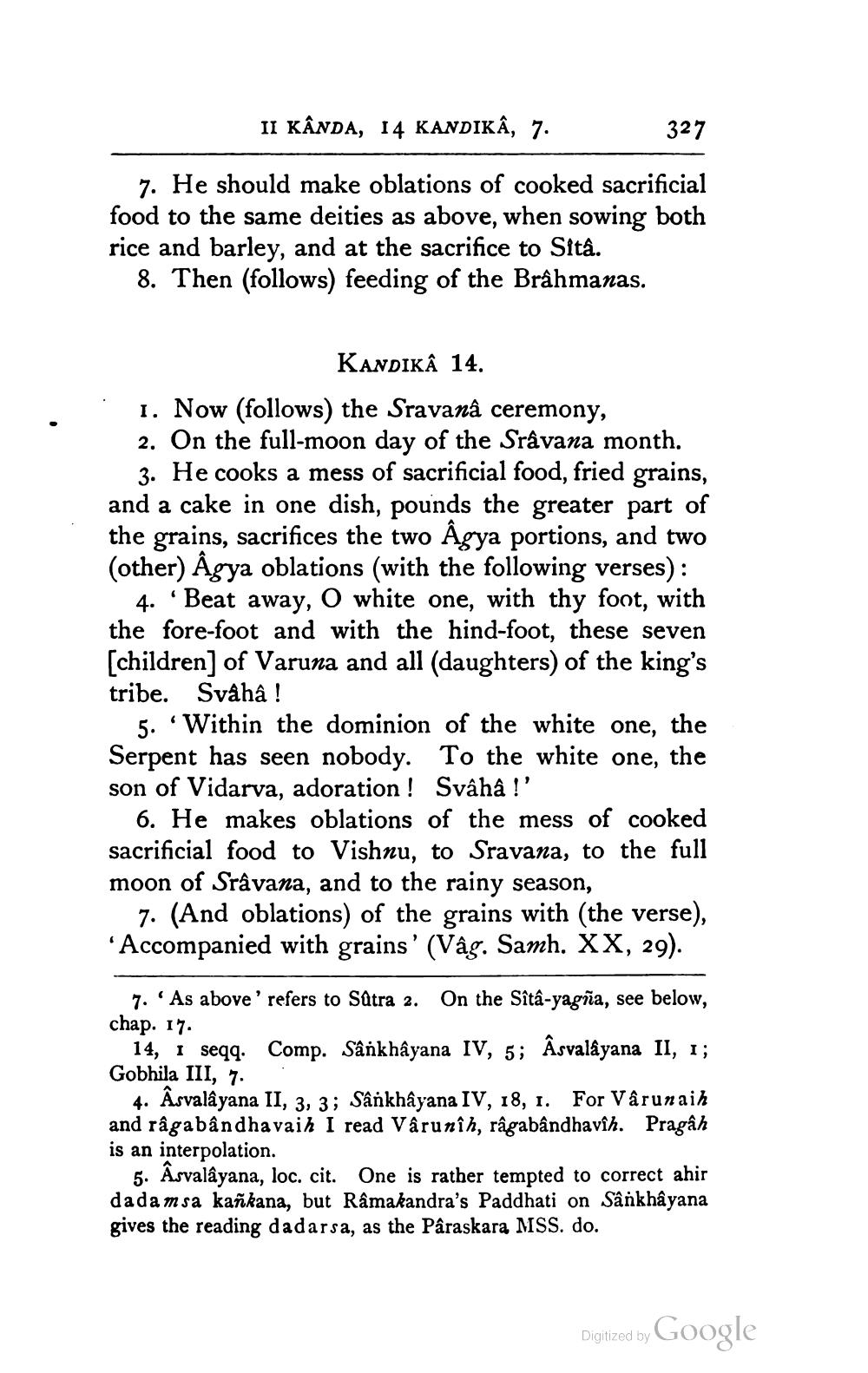________________
II KÂNDA, 14 KANDIKÂ, 7.
327
7. He should make oblations of cooked sacrificial food to the same deities as above, when sowing both rice and barley, and at the sacrifice to Sità.
8. Then (follows) feeding of the Brâhmanas.
KANDIKÂ 14. 1. Now (follows) the Sravanâ ceremony, 2. On the full-moon day of the Srâvana month.
3. He cooks a mess of sacrificial food, fried grains, and a cake in one dish, pounds the greater part of the grains, sacrifices the two Âgya portions, and two (other) Agya oblations (with the following verses) :
4. Beat away, O white one, with thy foot, with the fore-foot and with the hind-foot, these seven [children] of Varuna and all (daughters) of the king's tribe. Svâhâ !
5. Within the dominion of the white one, the Serpent has seen nobody. To the white one, the son of Vidarva, adoration! Svâhâ !'
6. He makes oblations of the mess of cooked sacrificial food to Vishnu, to Sravana, to the full moon of Srâvana, and to the rainy season,
7. (And oblations) of the grains with (the verse), 'Accompanied with grains' (Vâg. Samh. XX, 29).
7. As above' refers to Satra 2. On the Sîtâ-yagña, see below, chap. 17.
14, i seqq. Comp. Sânkhâyana IV, 5; Âsvalâyana II, 1; Gobhila III, 7.
4. Asvalâyana II, 3, 3 ; Sânkhâyana IV, 18, 1. For Varunaih and râgabandha vaih I read Varunih, ragabandhavih. Pragâh is an interpolation.
5. Asvalâyana, loc. cit. One is rather tempted to correct ahir dada m sa kañkana, but Râmakandra's Paddhati on Sânkhâyana gives the reading dadarsa, as the Paraskara MSS. do.
Digitized by Google




